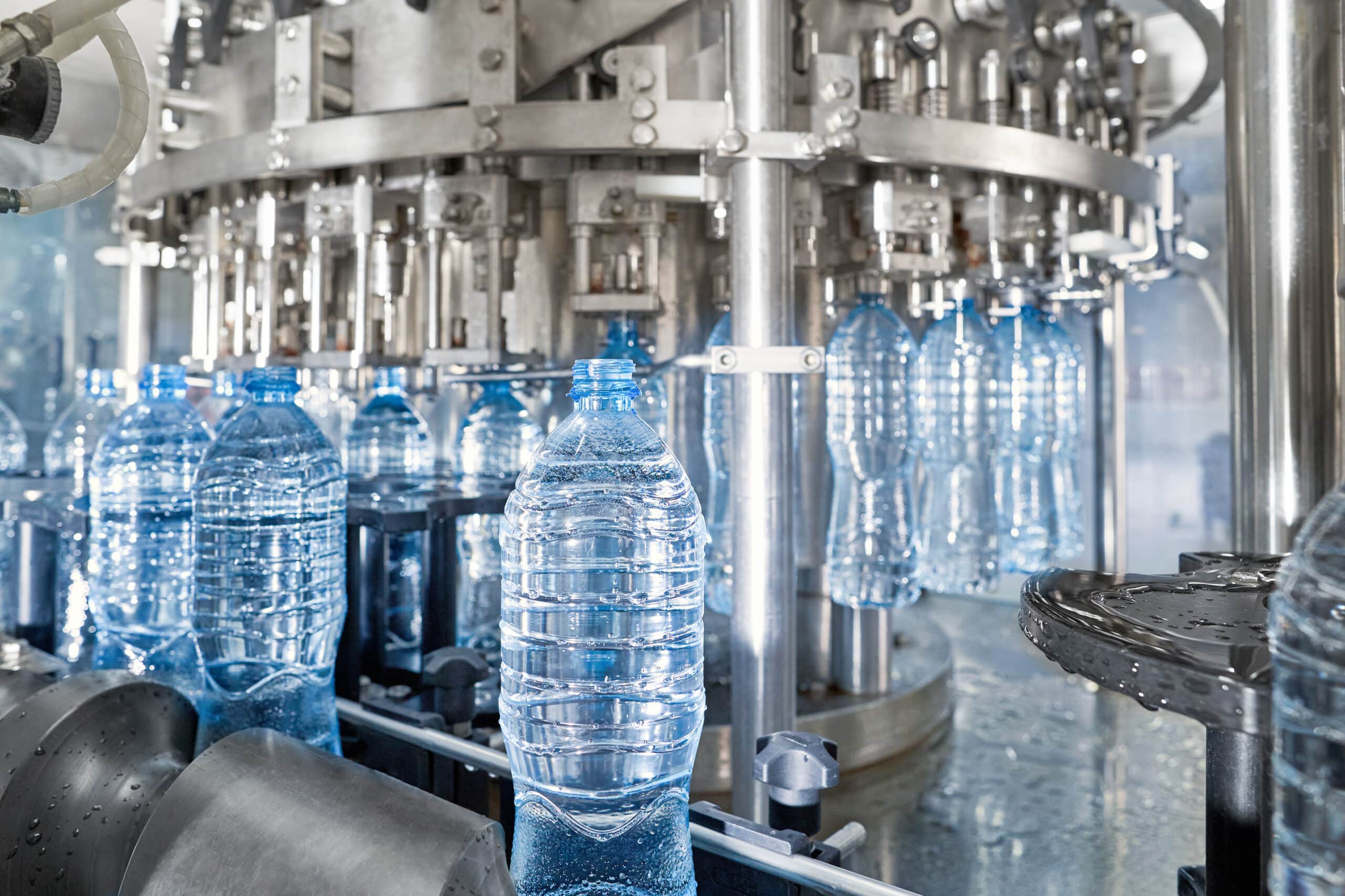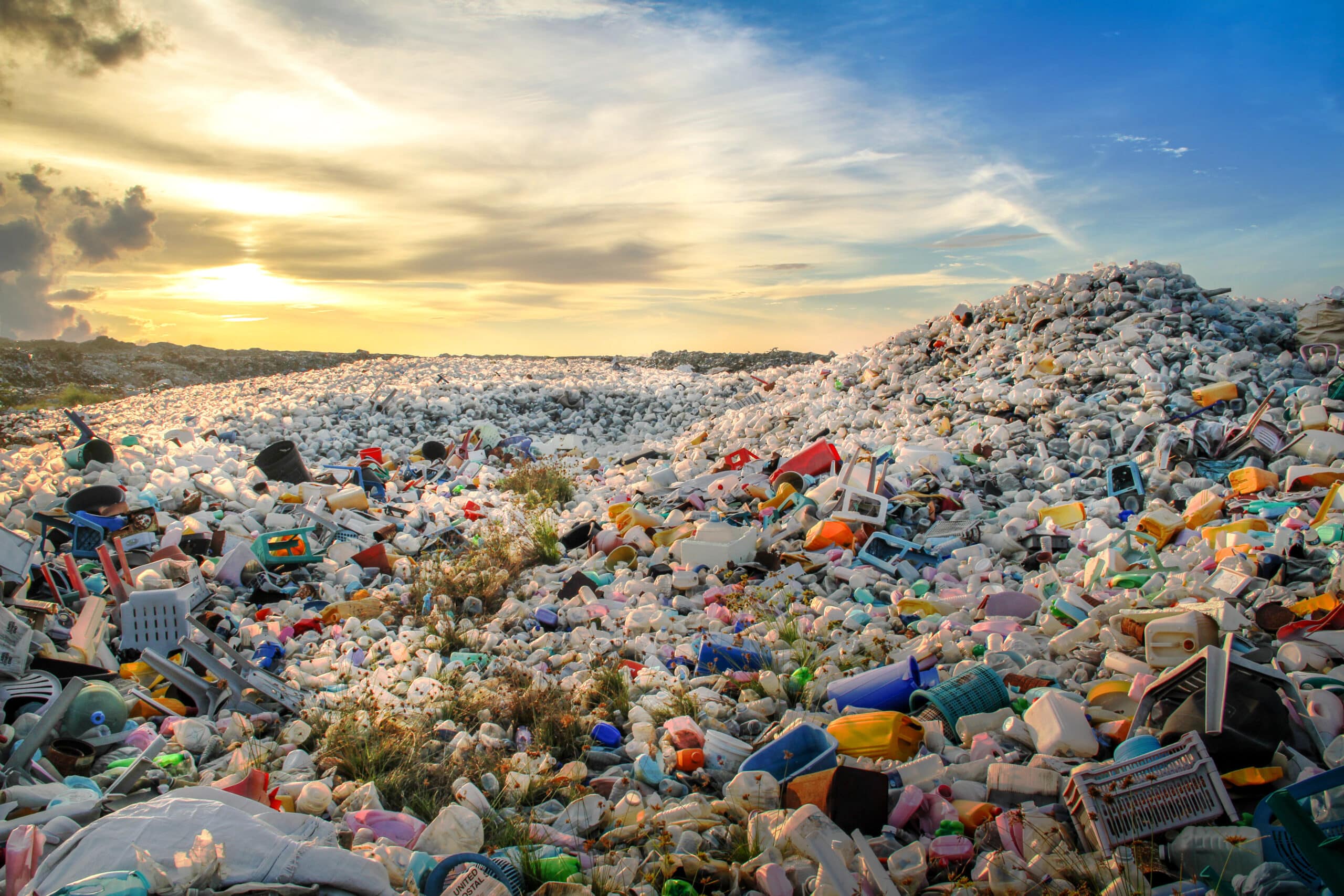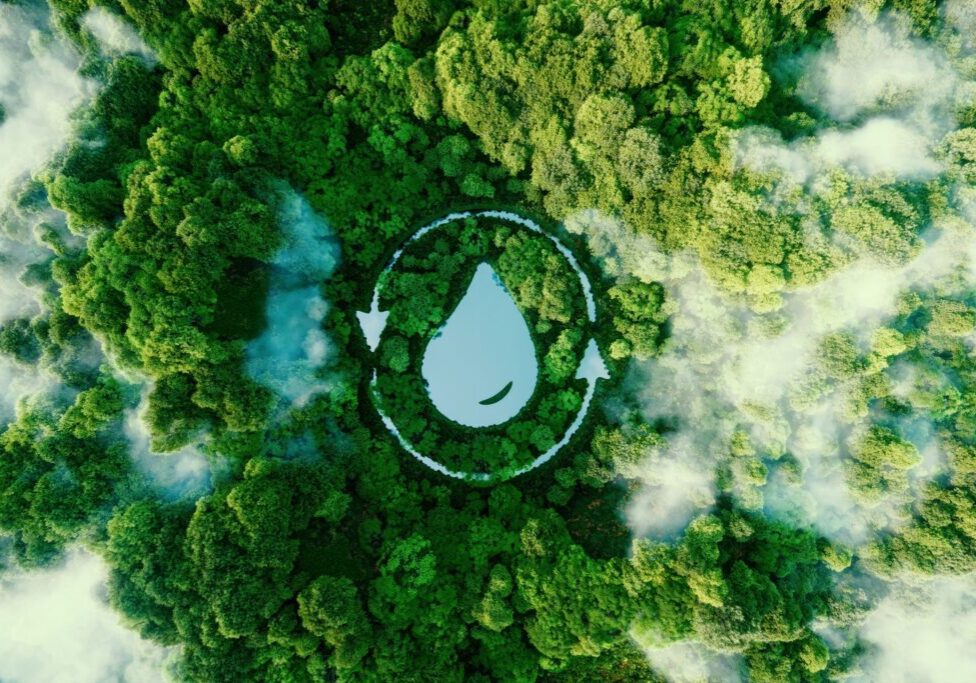We’re drinking so.much.water.
In 2022, the average American consumed 46.5 gallons of bottled water, compared to 36 gallons of soda. This is the most ever, surpassing carbonated soft drinks for the seventh year in a row.
But it comes at a major cost—most water is consumed from single-use plastic bottles. The production and disposal of these containers has a big impact on greenhouse gas emissions, the leading cause of climate change.
Millions of plastic containers are thrown away every day all over the world. But there are steps you can take to drink—and live—more sustainably. First, here are three main ways single-use water bottles contribute to climate change.
How Single-Use Water Bottles Contribute to Climate Change
Extraction of Fossil Fuels
Single-use water bottles are made from plastic, which is a petroleum product. The extraction and processing of petroleum releases greenhouse gasses into the atmosphere, which contribute to climate change.
Production of Plastic
The production of plastic also releases greenhouse gasses into the air. In fact, it’s responsible for about 4% of global gas emissions. The water bottling process releases 2.5 million tons of carbon dioxide into the atmosphere every year.
Disposal of Plastic
As you’ve noticed, single-use water bottles are often not recycled. Every year, 38 billion disposable containers (86%) end up in landfills in the US, according to the Container Recycling Institute.
When plastic breaks down in landfills, it releases methane, a greenhouse gas that is 25 times more potent than carbon dioxide.
How to Reduce the Environmental Impact of Water Bottles
Ditching the single-use plastic habit is easier said than done—it’s a behavior that permeates our lives, whether we’re at the grocery store, attending a baseball game, or stepping up to the refreshment line at the movie theater.
But there are a number of things that we can do to reduce the environmental impact of single-use water bottles, including:
Drink from a Reusable Container
This might be the simplest and most impactful change you can make. A reusable container can help you reduce your reliance on single-use bottles. There are so many different options available—find your favorite by shape, size, color, lid, or budget.
Drink Tap Water
Tap water is often a safe and reliable source of drinking water. If you live in an area with high-quality tap water, then this is a great option.
Drink Water from a Dispenser
When you’re in the office, at the gym, or on the road, filling your reusable thermos or jug from a water dispenser is a great way to get flavored, filtered, still, or sparkling water.
Recycle Plastic Water Bottles
If you do use a single-use container, make sure to recycle it. Every time you recycle, you help lessen the amount of plastic that ends up in landfills.
By making small changes in our everyday lives, we can help to reduce the environmental impact of single-use water bottles and make a difference in the fight against climate change.
But Are All Water Bottles Equally Bad?

Short answer: yes. Google any popular water brand and you’ll usually find a page devoted to its sustainability policy. But what does that really mean for us and the planet?
If you check out the sustainability statements of bottled water companies such as Pure Life, Poland Springs, Dasani, or Aquafina, you’ll see they share some things in common. These brands—and about a dozen others—are owned by BlueTriton, an American beverage company that was formerly a subsidiary of Nestlé.
BlueTriton describes itself as “a guardian of its resources and a provider of fresh water.” It is “committed to minimizing the environmental impact of our operations” while “making strides on our journey to use more recycled plastic” and “exploring new materials for alternative packaging solutions.”
According to BlueTriton, these include:
- Using recycled materials in bottles
- Investing in renewable energy sources
- Working to reduce water use in bottling operations
- Supporting water conservation projects
But the fact remains that even with these steps to minimize their carbon footprints, these companies crank out plastic water bottles—billions of them every year—many of which end up in landfills. That’s about as far as you can get from a sustainable business.
Who is the World’s Worst Contributor to Plastic Pollution?

But we don’t just drink water from single-use bottles. We drink a loooot of other beverages.
In fact, The Coca-Cola Company, PepsiCo and Nestlé are ranked as the world’s top plastic polluters according to Break Free From Plastic, whose latest global Brand Audit report serves as notice to companies fueling the climate crisis.
Coca-Cola has been the world’s top plastic polluter by a significant lead every year since the global brand audits began in 2018. PepsiCo has come in as the #2 top polluter
every year except 2019 when it was #3.
With over 500 brands, Coca-Cola is the largest drinks producer in the world. It generates 3,224,000 metric tons of plastic each year and sells more than 100 billion plastic bottles every year—200,000 per minute on average.
But worst of all, most of this is thrown into the trash. Only 12% of plastic bottles in the US are recycled. This means that the vast majority of Coca-Cola’s bottles end up in landfills or incinerators.
Here’s how companies such as Coca-Cola, PepsiCo, and Nestlé contribute to plastic pollution every day:
Using single-use plastic packaging.
These companies are the world’s largest producers of bottled water, snacks, and other beverages. These products are often packaged in single-use plastic containers.
Not using recycled plastic.
When these giant companies do use plastic, they often use virgin plastic, which is made from petroleum. This contributes to the extraction of fossil fuels, which is a major contributor to climate change.
Not recycling their plastic waste.
Although these corporations do recycle some of the plastic waste created in the production process, it’s estimated that only a small percentage of this waste is actually recycled. This means that most of it ends up in landfills or incinerators.
Coca-Cola said that it intends to sell at least 25% of its brands in refillable and returnable glass or plastic bottles by 2030. But it has a history of breaking promises and still has a long way to go to address the problem. Meanwhile, Coca-Cola remains one of the world’s biggest plastic polluters.
Now that you know the extent of the issue, let’s take a look at some of the solutions, starting with the term “sustainability”.
What’s a Simple Definition of Sustainability?
You’ve heard “reduce, reuse, recycle,” but what the heck is sustainability, really?
One of the best definitions of sustainability comes from something known as “The Brundtland Report” published by the United Nations in 1987.
>> Sustainability is “development that meets the needs of the present generation without compromising the ability of future generations to meet their needs”.
Pretty great, right? Think long term. Don’t short change the future.
We also love this one from the Environmental Protection Agency because it expands its perspective beyond human needs to include all of the natural world:
>> Sustainability is based on a simple principle: Everything that we need for our survival and well-being depends on our natural environment. To pursue sustainability is to create and maintain the conditions under which humans and nature can exist in productive harmony to support present and future generations.
Yes! Humans and nature need to live in harmony.
And this one from UCLA sums it all up well:
>> Sustainability is the balance between the environment, equity, and economy.
Bottom line: Sustainability means it’s important to use our resources wisely and protect them for the long-term good of the environment and all living things.
What about Water Dispensers? Are They Better for the Environment?
Heck yeah they are. Bottled water companies, office water bubblers, and point-of-use (or “bottleless”) water dispensers have three very different approaches to sustainability.
Bottled water brands (as we just described) are the worst offenders. Some claim to limit their environmental impact throughout their production process, from water sourcing to packaging, but they are in the business of producing and selling single-use plastic.
Traditional office water bubblers are slightly better. Instead of a single serving of water, they let people refill a cup, mug, or thermos from a large, central container. It does reduce the number of individual water bottles, but it’s basically just a bigger plastic jug and it has to be delivered, usually by a big, gas-guzzling truck.
Bottleless water dispensers, on the other hand, focus on reducing the environmental impact of single-use plastic bottles by dispensing water locally. These point-of-use machines connect directly to the local water line so there’s no water delivery needed. They filter, purify, and (in some cases) flavor what comes out of the tap for the cleanest water with the smallest environmental impact.
While bottled water companies, office bubblers, and water dispensers have sustainability efforts in place, bottleless machines have a much greater potential to reduce the environmental impact of single-use plastic bottles.
If you are looking for a sustainable way to drink water at your work, gym, apartment, or hotel, a local water dispenser is a great option.
Here is a comparison of the sustainability efforts of bottled water companies and water dispensers:
| Bottled Water Companies | Bottleless Water Dispensers | |
| Water Sourcing | Bottled water companies often try to source their water from sustainable sources, but are doing a less-than-ideal job. For example, Pure Life is working to source its water from springs that are protected by national parks. (Is that what we want?) | Bottleless water dispensers provide high-quality local tap water that is filtered and purified. |
| Packaging | Bottled water companies use mostly virgin plastic and some recycled materials in their bottles. They try to lower the impact by reducing bottle weight. For example, Aquafina has reduced the weight of its bottles by 30%. | Bottleless dispensers eliminate the use of single-use plastic bottles. This can save a significant amount of plastic waste, as an office with 50 employees can use up to 7,000 plastic bottles per year. |
| Bottling Operations | Bottled water companies actually use water to bottle water (!) but are trying to reduce their water use in their bottling operations. For example, Dasani has reduced its water use by 20%. | By definition, bottleless dispensers don’t bottle water at all. They dispense local water at the source, saving water and energy used in bottling operations. |
| Distribution | Some bottled water companies are working to reduce their carbon emissions from distribution. For example, Poland Spring is using more fuel-efficient trucks to deliver its water. | Bottleless dispensers use less energy because they dispense local water. There’s no need for refrigeration or water delivery and they don’t require fuel to transport the water. |
Besides Water Bottles, How Can We Reduce Other Plastic Pollution?
Plastic pollution is a major environmental problem, and there are many things that we can do to reduce it. Here are some of the most important steps that we can take:
Reduce our use of single-use plastics.
Single-use plastics are those that are used once and then discarded. They include items such as plastic bags, straws, and water containers. We can reduce our use of single-use plastics by bringing our own reusable bags when we go shopping, using metal straws, and drinking tap water instead of bottled water.
Recycle plastic waste.
When we recycle plastic, it is converted into new products, which helps to reduce the amount of plastic that ends up in the environment. We can recycle plastic by sorting our waste and placing plastic items in the recycling bin.
Support businesses that are committed to reducing plastic pollution.
There are many businesses taking steps to reduce their use of plastic. We can support them by shopping there and letting them know we appreciate their efforts.
Shop Without Plastic and Blueland offer sustainable alternatives to disposable products. Brands such as Patagonia, Allbirds, and Seventh Generation are well-known for their environmentally friendly practices.
Get involved in advocacy efforts.
There are many organizations that are working to reduce plastic pollution. We can get involved in these efforts by volunteering our time, donating money, or signing petitions.
For example, you can get action alerts from Food and Water Watch, Open Space Institute, and Oceana, just three of many organizations dedicated to saving the planet.
Avoid buying products that are packaged in plastic.
If you do buy products that are packaged in plastic, choose products that are made from recycled plastic.
Educate yourself about plastic pollution.
The more you know about the problem, the more likely you are to take steps to reduce it. Learn more at sites such as Break Free From Plastic, Water.org, Clean Water Action, Ellen MacArthur Foundation, and Alliance for Water Stewardship (AWS). This blog post is a good start!
Talk to your friends and family about plastic pollution.
The more people who are aware of the problem, the more likely we are to find solutions.
There’s no time to waste. By following these tips, we can help to reduce plastic pollution, protect the environment, and create a more sustainable future for all.
Learn how you can help unbottle the future at Bevi.co.


